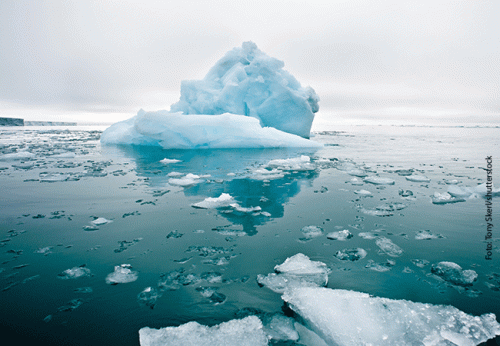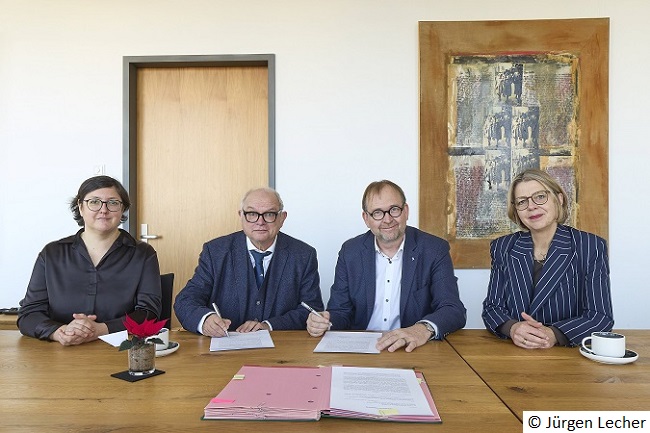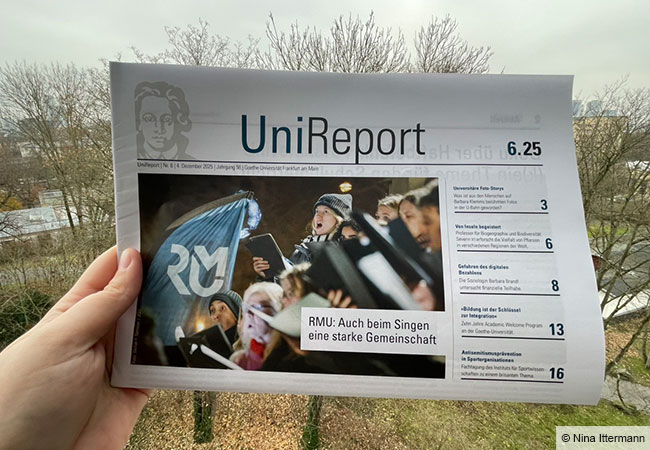
Current climate policies imply a high risk for tipping critical Earth system elements, even if temperatures return to below 1.5 °C of global warming after a period of overshoot. A new study published in Nature Communications indicates that this risk can be minimized if the warming is swiftly reversed. That is why reducing emissions in the current decade is crucial for the stability of the Earth systems functions, researchers from the Potsdam Institute for Climate Impact Research (PIK), the International Institute for Applied Systems Analysis (IIASA) and other institutes write. Climate researcher Dr Nico Wunderling from PIK and C³S, Center for Critical Computational Studies at Goethe University, is involved in the study.
The research centers on the tipping risks for four interconnected core climate tipping elements: the Greenland Ice Sheet, the West Antarctic Ice Sheet, the Atlantic Meridional Overturning Circulation (AMOC), and the Amazon Rainforest. Human-made climate change can lead to a destabilization of large-scale components of the Earth system such as ice sheets or ocean circulation patterns, the so-called tipping elements. While these components will not tip over night, fundamental processes are put into motion unfolding over tens, hundreds or thousands of years. These changes are of such a serious nature that they should be avoided at all costs, the researchers argue. In their new study, they assessed the risks of destabilization of at least one tipping element as a result of overshooting 1.5 °C. Their analysis shows how crucial it is for the state of the planet to adhere to the climate objectives of the Paris Agreement. It further emphasizes the legacy of today’s climate (in)action for centuries to millennia to come.
“While timescales to 2300 or beyond may seem far away, it is important to map out tipping risks to the best of our abilities. Our results show how vitally important it is to achieve and maintain net-zero greenhouse gas emissions to limit these risks for the next hundreds of years and beyond,” explains co-lead author Tessa Möller, scientist at IIASA and PIK. “Our calculations reveal that following current policies until the end of this century would lead to a high tipping risk of 45 percent of at least one of the four elements tipping by 2300.”
Exceeding 2 °C global warming strongly increases tipping risks
“We see an increase in tipping risk with every tenth of a degree of overshoot above 1.5 °C. But if we were to also surpass 2 °C of global warming, tipping risks would escalate even more rapidly. This is very concerning as scenarios that follow currently implemented climate policies are estimated to result in about 2.6 °C of global warming by the end of this century,” says Annika Ernest Högner from PIK, who co-led the study.
“Our study confirms that tipping risks in response to overshoots can be minimized if warming is swiftly reversed. Such a reversal of global warming can only be achieved if greenhouse gas emissions reach at least net-zero by 2100, i.e. emissions are reduced as much as possible, while non-avoidable emissions are removed from the atmosphere using relevant technologies or natural means of carbon capture. The results underline the importance of the Paris Agreement’s climate objectives to limit warming to well below 2 °C even in case of a temporary overshoot above 1.5 °C,“ says study author Nico Wunderling of PIK and C³S, the Center for Critical Computational Studies at Goethe University Frankfurt.
The four tipping elements analyzed in the study are pivotal in regulating the stability of the Earth’s climate system. So far, complex Earth system models are not yet able to comprehensively simulate their non-linear behavior, feedbacks, and interactions between some of the tipping elements. Therefore, the researchers used a stylized Earth system model to represent the main characteristics and behavior and thereby systematically include relevant uncertainties in tipping elements and their interactions. Possible future stabilizing interactions, such as the cooling effect of a weakening AMOC on the northern hemisphere, were also taken into account.
“This analysis of tipping point risks adds further support to the conclusion that we are underestimating risks, and need to now recognize that the legally binding objective in the Paris Agreement of holding global warming to ‘well below 2°C’ in reality means limiting global warming to 1.5°C. Due to insufficient emission reductions, we run an ever increasing risk of a period overshooting this temperature limit, which we need to minimize at all costs to reduce dire impacts to people across the world,” concludes PIK director and author of the study Johan Rockström.
Article:
Tessa Möller, Annika Ernest Högner, Carl-Friedrich Schleussner, Samuel Bien, Niklas H. Kitzmann, Robin D. Lamboll, Joeri Rogelj, Jonathan F. Donges, Johan Rockström & Nico Wunderling (2024): Achieving net zero greenhouse gas emissions critical to limit climate tipping risks. Nature Communications. [DOI: 10.1038/s41467-024-49863-0]
The study is also available at https://www.nature.com/articles/s41467-024-49863-0
Source: Nature Communications









